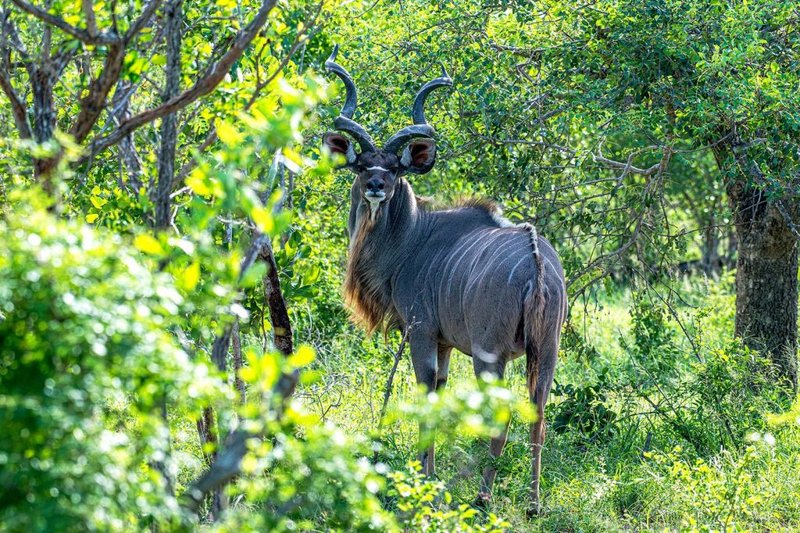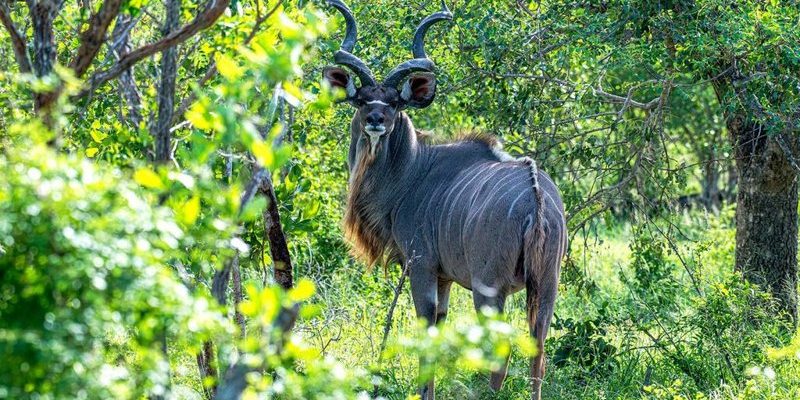
Picture a landscape dotted with acacia trees, open grasslands, and dense thickets. That’s exactly the kind of environment where greater kudus thrive. These animals are masters of camouflage, blending seamlessly into their surroundings. Let’s dive into their habitat and distribution to understand what makes these stunning creatures tick.
Greater Kudu Habitat: A Rich Tapestry
Greater kudus primarily inhabit wooded savannas and thickets across eastern and southern Africa. This lush environment is crucial for them, not just for food but also for protection against predators. Think about it: just like we love a cozy nook to retreat to when feeling overwhelmed, kudus prefer the cover of trees to stay safe.
These animals are particularly fond of areas with a mixture of open grassland and scattered acacias. Why? Because their diet consists mainly of leaves, fruits, and tender shoots, which thrive in these diverse habitats. Greater kudus are also known to favor areas that experience seasonal rainfall, as this is when foliage is abundant.
In terms of altitude, they can be found at elevations ranging from sea level up to about 2,500 meters (8,200 feet). This adaptability in altitude means that greater kudus can thrive in different environments, from lowland savannas to mountainous regions.
Distribution of Greater Kudus: An African Affair
So, where exactly can you find greater kudus in Africa? They are widely distributed across the continent, particularly in countries such as:
- Tanzania
- Kenya
- South Africa
- Zambia
- Namibia
- Botswana
- Zimbabwe
- Swaziland
Each of these locations offers a slightly different habitat, but they all meet the fundamental needs of the greater kudu. The combination of trees and open space allows these animals to graze and maintain a careful watch out for threats.
You might be wondering why their range is so defined. It’s largely due to their dietary needs and their preference for specific environments. While they may roam over large distances in search of food, they generally avoid densely populated human areas. Urbanization and habitat loss represent threats to their populations, pushing them into more secluded regions.
Behavioral Adaptations to Habitat
Greater kudus have some fascinating behavioral adaptations that allow them to thrive in their chosen habitats. For instance, they’re mostly crepuscular, meaning they are most active during dawn and dusk. This behavior reduces the risk of predation from big cats like lions and leopards, which tend to hunt during the day.
In terms of social structure, kudus are typically shy and prefer to be alone or in small groups. This solitary behavior is a survival strategy. Imagine being a kudu in an open field; if you’re alone or with just a few friends, it’s easier to blend in and escape notice.
Listening and Smelling are their other key adaptations. Their large ears and keen sense of smell help them detect predators quickly. It’s like having an advanced alarm system; they can pick up on sounds and scents long before a potential threat comes too close.
Impact of Climate on Habitat and Distribution
Climate plays a significant role in determining where greater kudus can thrive. With their preference for seasonal rainfall, the fluctuation of weather patterns can impact their habitat. Areas with consistent rainfall support a healthy growth of foliage, which means more food for the kudus. However, prolonged drought conditions can lead to food shortages and push animals to migrate in search of greener pastures.
Interestingly, climate change poses a threat to their habitats. As temperatures rise and rainfall patterns shift, the regions where these animals thrive may also change. It’s like a game of musical chairs—if the music stops and the chairs shift, greater kudus have to adapt quickly to survive.
Interaction with Other Species
The habitat of greater kudus is not just occupied by them; it’s a bustling ecosystem with a variety of other animals and plants. They often share their environment with species like zebras, impalas, and various bird species. This interaction creates a balance in the ecosystem but can also lead to competition for food resources.
Interestingly, greater kudus play a role in their habitat, too—by feeding on certain plants, they help to control vegetation growth, ensuring a healthy ecosystem. This relationship reminds us that every creature, big or small, plays a part in the intricate web of life.
Conservation Status and Challenges
Greater kudus are classified as “Least Concern” by the IUCN Red List, but that doesn’t mean they’re free from threats. Habitat loss due to agriculture and urban development poses a significant risk. It’s like trying to find your favorite café in a city that’s constantly being redeveloped! The familiar spots you once knew can vanish before you realize it.
Additionally, hunting and poaching in certain regions further threaten their populations. It’s crucial to have conservation efforts in place to protect their habitats and ensure that greater kudus can thrive. Initiatives focusing on sustainable land use and wildlife protection are essential for preserving these magnificent creatures.
Final Thoughts
Greater kudus are truly remarkable animals, embodying the wild spirit of Africa. Their habitat and distribution tell a story of adaptation, resilience, and the delicate balance of nature. As climate change and human encroachment disrupt their environments, understanding where they live is more important than ever.
By learning more about these elegant antelopes and advocating for their protection, we can help ensure that future generations will also marvel at their beauty. So, the next time you think of Africa’s wildlife, don’t forget to appreciate the greater kudu—a symbol of grace, strength, and the wild heart of the continent.

